Branding connected to communications to build and manage value brands
Technological, social and economic revolutions are creating more ephemeral and less relevant brands. As a result, brands are looking for new ways to engage with enterprises and society to guarantee their survival.
Brands can become distorted in their orientation to the market when their implementation disconnects them from the reality that created them, or else because, when being created, were already disconnected from the communities they target. New branding can and should think more about its addressed stakeholders from the start. Below we examine the core issues of a communication-based branding combining a balance between method and intuition.
BRAND DIAGNOSIS
There is no branding without analysis.
We should regularly analyze our brand’s health to find the correlation between how we see ourselves and how others see us. Only then will we discover the “authenticity of the brand,” on which we can draw up branding opportunities that are better connected to the reality representing a road map aimed toward the growth of the business.
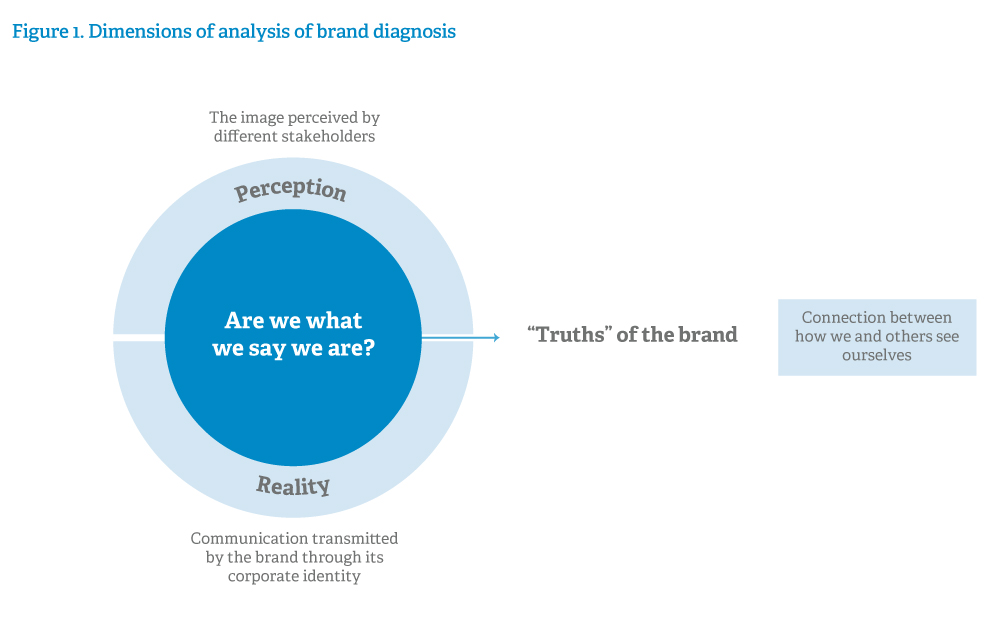

Reality
- Differentiation (market). Ability to distinguish the brand, products and services over the competitive environment, in a globalized context and where the limits between industries blur.
- Relevance (stakeholders). Ability to offer consumer value, being capable of interpreting their desires and behaviors and satisfying them by means of tangible and emotional benefits.
- Clarity (brand). Ability to communicate with precision the position, value proposition and trade offer through different conversation territories generating understanding and connection.
Perception
- Authenticity (internal vision). Ability to maintain the core element of the brand, showing honesty and transparency.
- Credibility (external vision). Ability to generate confidence through the value proposition, understanding the brand’s permits and degree of flexibility.
BRAND STRATEGY
What we are and want to be
In the definition of what we are, why we exist, how we think and what we offer our audiences, the Brand Matrix compiles the most important strategic elements defining the brand.
With regard to the challenges companies face when announcing their goals, a strategic brand position must precede any effective communications position. Since brand strategy is linked to business strategy, it is an essential catalyst of the new communications.
Part of the loss of relevance previously mentioned is due to the idea that we can underpin our brand with a new aesthetic without looking into its inner and human ambition. In times dominated by a desire for adventure and exploring the outside world, detecting a key insight and a differentiating purpose is a declaration in favor of the inside world.
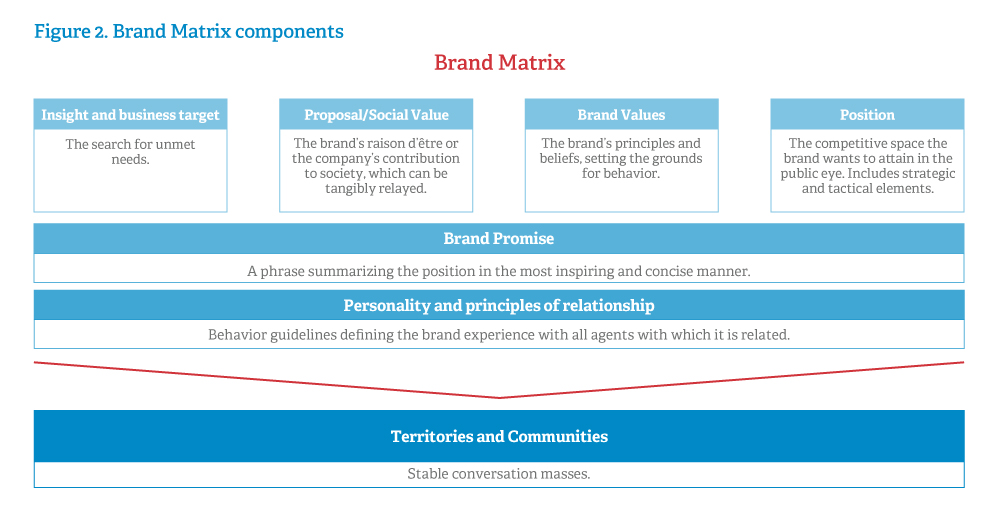
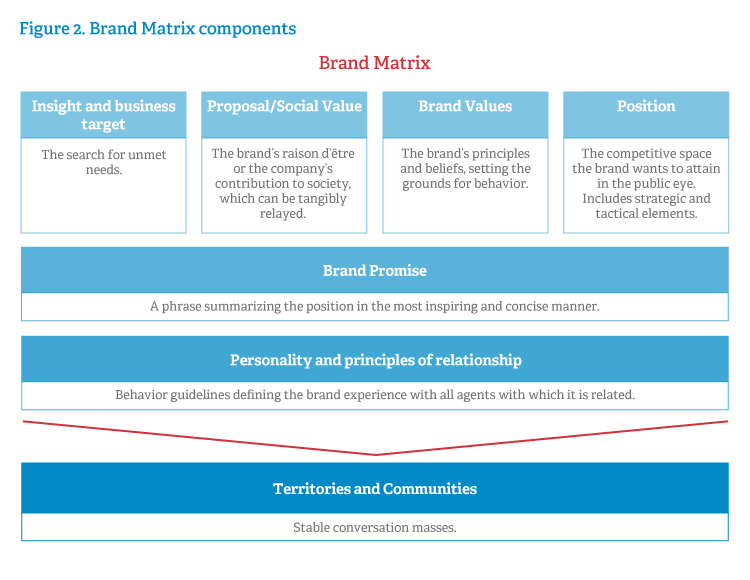
Any product or service can be developed fully until becoming a brand if developed through its own rich social and cultural context, which implies that, in a connected branding strategy, defining the brand and its business target is just as important as the stable conversation masses (for example, in territories such as sports) in which the brand wants to have a story it can apply to specific communities (for example, runners/extreme sports athletes, etc.), thereby activating the story. The goal is to humanize the brand, execute it in a more relevant way and sophisticate our listening and intelligence system. Thus, we find the way the brand provides conversation environments, which already exist through storytelling and/or storydoing techniques to connect with communities favoring advocacy.
BRAND DESIGN
The aesthetics of thinking
By providing art to the function as collective interpreters, brand designers equally harness both impulsive and rational methods, because creating a brand is a harmonic connection of two core elements: strategy and design.
According to UNESCO, creative industries are increasingly important to post-industrial economies with a large knowledge component. The current situation shows how enterprises with high world growth internally organize the design function, considering it a relevant feature of their management. Design is already an essential tool for business improvement and differentiation, and it is particularly important in our global culture and in markets and sectors where price competition is a thing of the past. Aesthetics have become a business target.
Designers generate desire, provoke reactions and inspire others. This intimate relationship between design and proposal is preceded by reason in the form of strategy that minimizes confusion and puts us on the right course to design something that is both visually and verbally comprehensible . Design is a bridge between strategic thinking and understanding, and to connect with the market, it should always be geared at reaching the desired business objective. The days when design was used to make something more attractive are in the past. Nowadays design is a way of thinking, and if we understand it is an added value tool like any other, we should develop capabilities for its management.
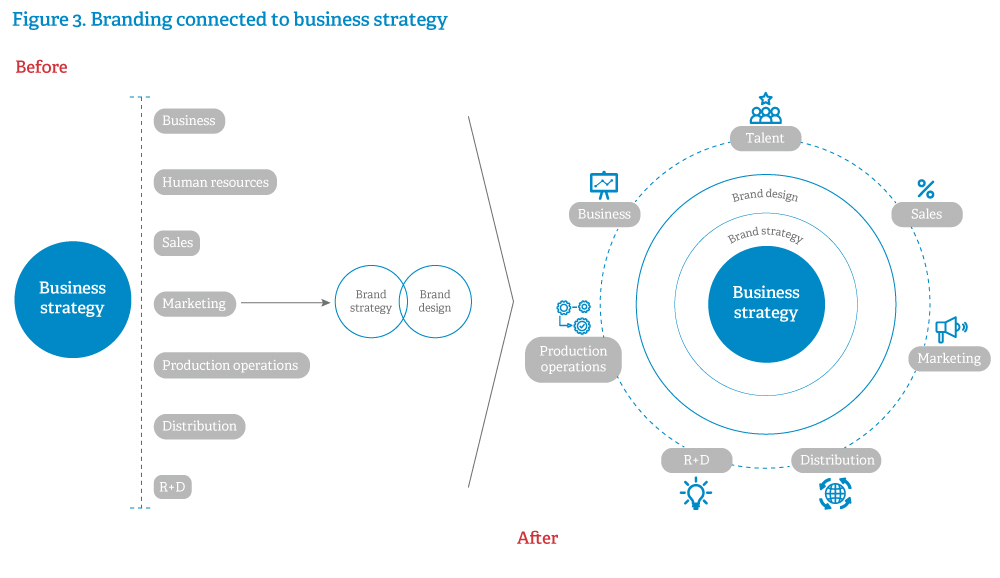
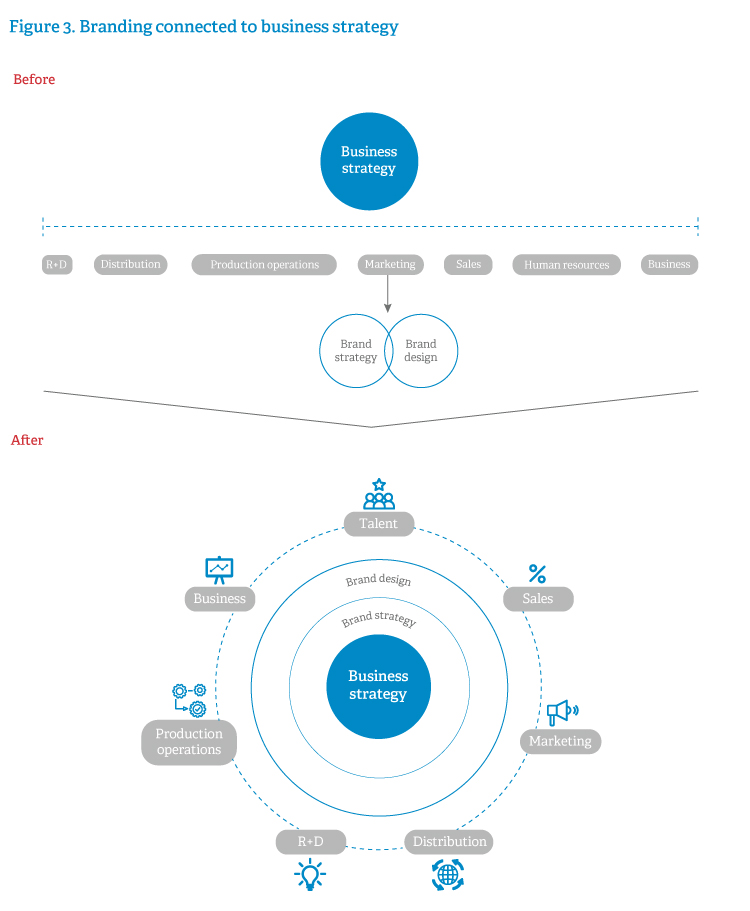
Ultimately, connected branding pursues a balance between utility and beauty, as well as efficiency and emotion targeted at the needs and expectations of specific communities.
*Photo credits: Cody Davis by Unsplash
Authors
David González Natal
Bárbara Ruiz




